The Sandy Bridge Review: Intel Core i7-2600K, i5-2500K and Core i3-2100 Tested
by Anand Lal Shimpi on January 3, 2011 12:01 AM ESTVideo Encoding Performance
Our DivX test is the same DivX / XMpeg 5.03 test we've run for the past few years now, the 1080p source file is encoded using the unconstrained DivX profile, quality/performance is set balanced at 5 and enhanced multithreading is enabled.
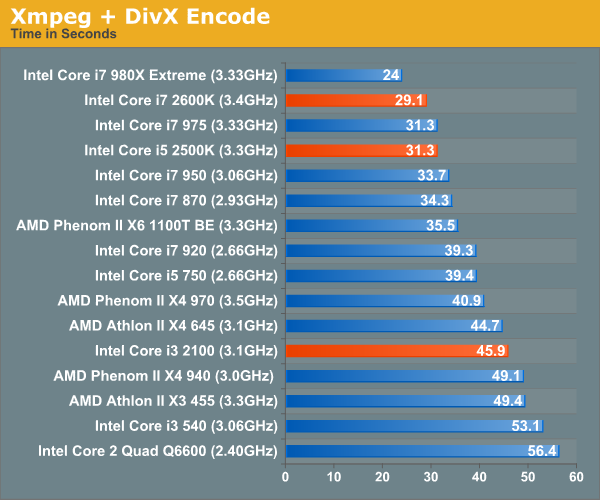
Despite the greatness that is Quick Sync, there are no editing/high quality transcode tools that support Intel's hardware transcode engine. Luckily, Sandy Bridge is still very fast when it comes to software encoding. Our WME test only shows minimal gains thanks to the architectural improvements however.

Graysky's x264 HD test uses x264 to encode a 4Mbps 720p MPEG-2 source. The focus here is on quality rather than speed, thus the benchmark uses a 2-pass encode and reports the average frame rate in each pass.
Other than the Core i7 980X, there's nothing quicker than Sandy Bridge. The Core i7 2600K is 10% faster than the Core i7 975, and the 2500K easily outpaces its Lynnfield rivals. The i3 2100 is quicker than its predecessor, however not by much. In these heavily threaded situations, AMD's Athlon II X4 645 is a better option than the 2100.
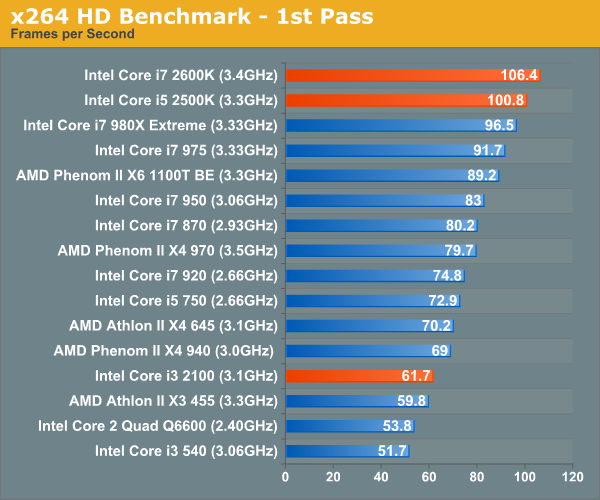
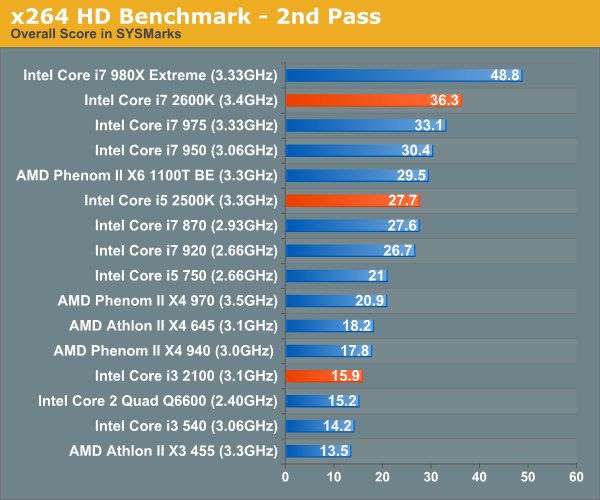
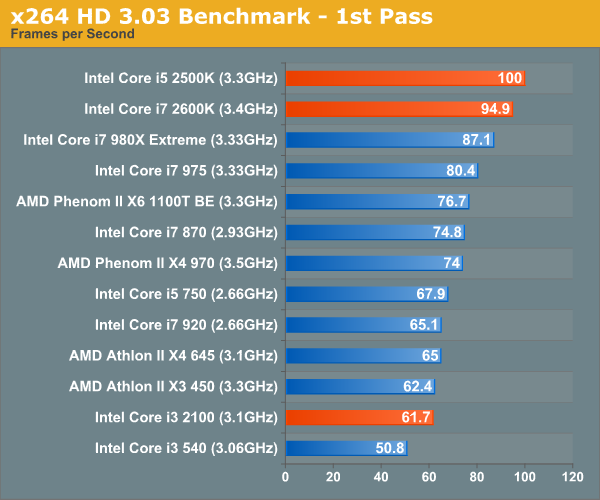
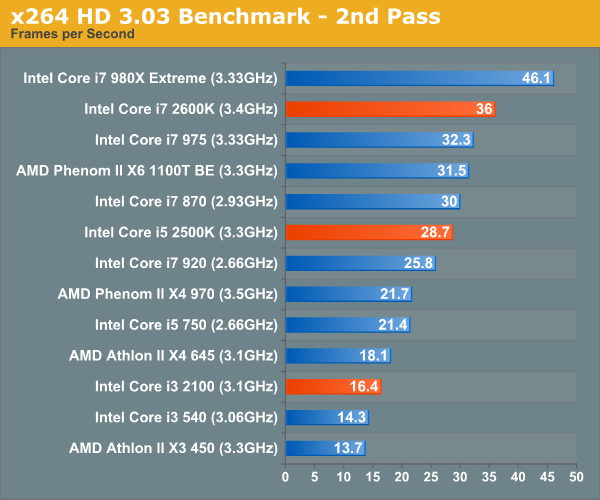










283 Comments
View All Comments
omelet - Monday, January 3, 2011 - link
> The Sandy Bridge Review: Intel Core i5 2600K, i5 2500K and Core i3 2100 TestedDoesn't look fixed over here.
Zoomer - Monday, January 3, 2011 - link
Score one for intel marketing!Oh wait...
Beenthere - Monday, January 3, 2011 - link
I'll stick with my AMD 965 BE as it delivers a lot of performance for the price and I don't get fleeced on mobo and CPU prices like with Intel stuff.geek4life!! - Monday, January 3, 2011 - link
Exactly what I have been waiting on, time to build my RIG again. Been without a PC for 1 year now and itching to build a new one.Game on baby!!!!!!!!!!!!!!
Doormat - Monday, January 3, 2011 - link
If QuickSync is only available to those using the integrated GPU, does that mean you cant use QS with a P67 board, since they don't support integrated graphics? If so, I'll end up having to buy a dedicated QS box (a micro-ATX board, a S or T series CPU seem to be up to that challenge). Also what if the box is headless (e.g. Windows Home Server)?Does the performance of QS have to do with the number of EUs? The QS testing was on a 12-EU CPU, does performance get cut in half on a 6-EU CPU (again, S or T series CPUs would be affected).
No mention of Intel AVX functions. I suppose thats more of an architecture thing (which was covered separately), but no benchmarks (synthetic or otherwise) to demo the new feature.
MeSh1 - Monday, January 3, 2011 - link
Yeah I think this is the case or according the the blurb below you can connect a monitor to the IGP in order to use QS. Is this a design flaw? Seems like a messy workaround :(" you either have to use the integrated GPU alone or run a multimonitor setup with one monitor connected to Intel’s GPU in order to use Quick Sync."
SandmanWN - Monday, January 3, 2011 - link
The sad part is for all the great encoding you get, the playback sucks. Jacked up.Doormat - Monday, January 3, 2011 - link
I'm not that interested in playback on that device - its going to be streamed to my PS3, DLNA-enabled TVs, iPad/iPhone, etc. Considering this wont be supported as a hackintosh for a while, I might as well build a combo transcoding station and WHS box.JarredWalton - Monday, January 3, 2011 - link
How do you figure "playback sucks"? If you're using MPC-HC, it's currently broken, but that's an application issue not a problem with SNB in general.Absolution75 - Monday, January 3, 2011 - link
Thank you so much for the VS benchmarks!! Programmers rejoice!